Wool carpets can be recycled at the end of their useful life in a number of interesting ways. Wool carpets are naturally durable so they can be re-formed and re-used as decorative area rugs. Wool pile from old carpets, along with waste wool from the manufacturing process, can be used in environmentally-friendly insulation products. Discarded wool carpet can be cut into strips and used to protect newly planted trees and to prevent erosion and soil loss. The slow breakdown of wool provides rich nutrients and mulch to nourish the saplings and promote faster growth.
Under the right conditions, wool is totally biodegradable. Wool is made up of natural amino acid chains, which are often referred to as “the building blocks of life”. As wool bio-degrades, rich, essential plant nutrients are released such as potassium, nitrogen and phosphorous. Even if a wool carpet is placed in landfill, it will decompose leaving no harmful residues.
Wool is the ultimate renewable fiber – it grows continuously on a sheep’s back all year round. During summer, the wool from New Zealand sheep is removed (sheared) by skilled craftsmen and the sheep return to their pasture. At the end of its useful life, the pile from wool carpet can be returned to the ground, where the nutrients released as it decomposes promote further grass growth, and the natural production cycle starts all over again.
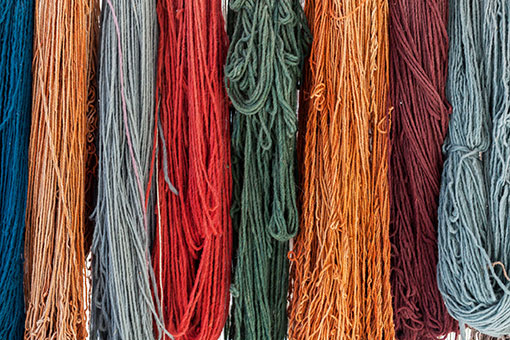
The weavers buy the required wool or silk. This material goes through a dye-ing process based on the amount of colors in the rug. The batches of wool/silk are dyed and then hung to dry.
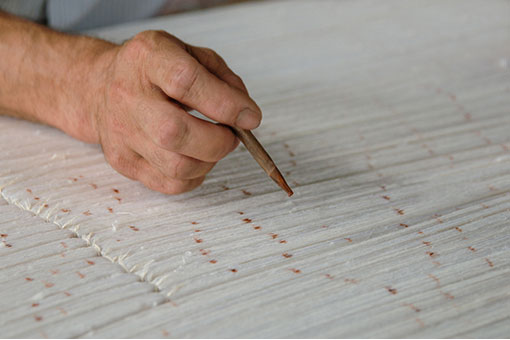
We work together with our overseas designers to produce the designs we desire. These designers graph out the pattern for the weavers with very detailed sections of design and color; noting each intricate change in the design as well as the color.
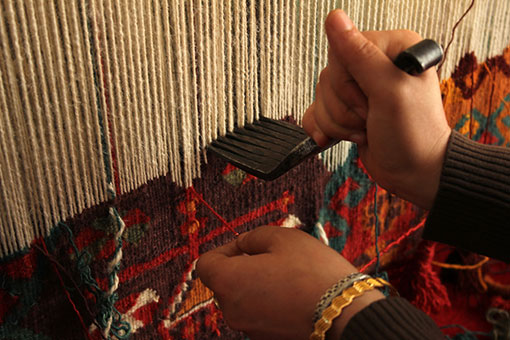
The weavers sit at the loom with the balls of the individually dyed wool hanging overhead. Generally, a room size rug will have about three weavers sitting on the loom. With graph by their side, the weavers begin to pull down the wool from above and tie it around the foundation. They weave from left to right and after each piece of wool is hand tied, they clip it and move to the next. After several rows of knot tying, the weavers pack down the wool with a metal tool in the shape of a curved brush. This packing does two things: first, it assures the weavers that the knots are tight against each other and secondly, since the tool is curved at an angle, this gives the pile of the rug an angle. The result of this can be seen when the rug is complete: there is a dark and a light side to the rug. Once the weavers are finished weaving a rug, they have an extension of the foundation on top and at the bottom of the loom. This is where they cut and take the rug down.
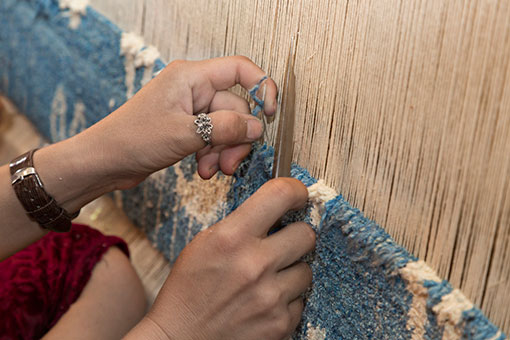
Once the rug is off the loom, the pile is at various heights and now it goes through the clipping process. People actually get on their hands and knees and start clipping the pile several times until they are satisfied with the feel, making the pile as even as possible.
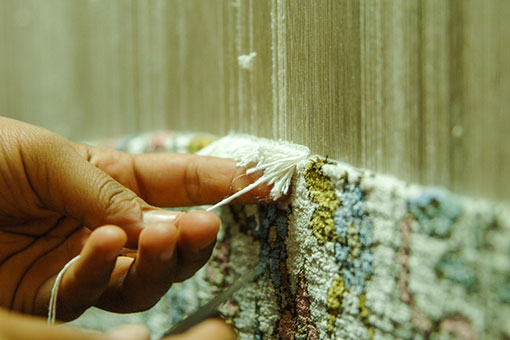
The loom is what the rug is woven on. It consists of a wooden structure with a grid of cotton. The cotton becomes the foundation of the rug. The “warp” is the cotton that runs vertically on the loom and the “weft” is the one that runs horizontally. The warp and weft together create a grid of cotton on which each strand of wool is tied around.
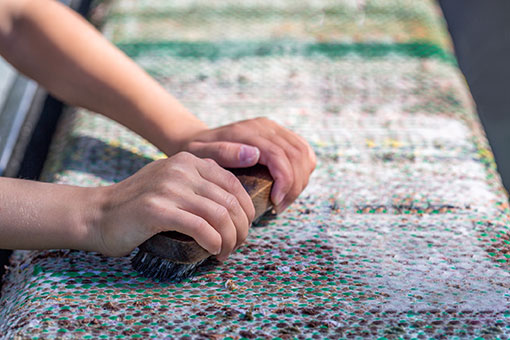
Once clipped, the rug is now ready for wash. The rug is hosed down with water and this is a good test for the colorfastness of the dyes. Once wet, the rug is then scrubbed with soap and water and a scrub brush and then hung to dry in the sunday. Depending on the complexity of the weave and the size of the rug, the time to completion can be anywhere from 6 months to up to 3 years.